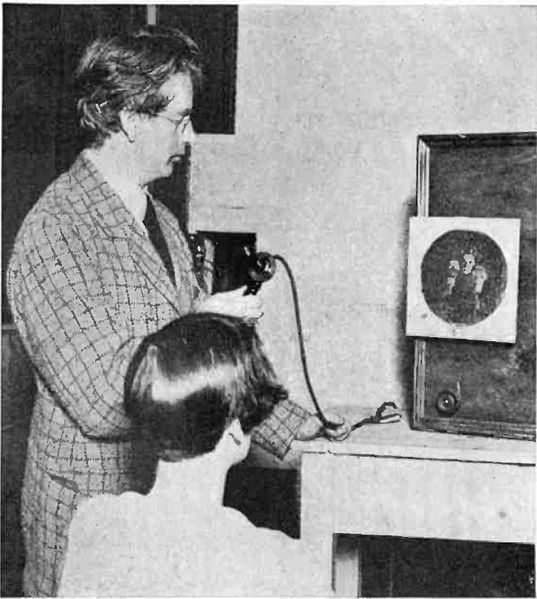Image: John Logie Baird and television receiver

Description: Scottish television pioneer John Logie Baird (left) and his television receiver. This was one of the world's first television systems, with which Baird demonstrated transmission of moving images in 1925. The transmitter consisted of a spinning disk with 30 lenses in it which focused light from a spot on the image onto a selenium photoelectric cell. As each lens swept across the subject the photocell produced an electric signal which varied with the brightness of the subject at each point along the scan line. In the television receiver shown here, the video signal from the transmitter is applied to a neon lamp behind another spinning disk with holes in it. As each hole sweeps in front of the lamp it reproduces a line of the image. Baird, left, holds a control with which he adjusts the speed of the disk to synchronize it with the transmitter disk. The reproduced image, visible at right was a dim orange, composed of 30 scan lines, just enough to recognise faces.Because human faces did not have enough contrast to show up well, Baird used ventriloquist dummies in his first demonstrations, making them move and talk for the camera. The image shows his partner with two dummies on his lap. The television image shown was probably retouched in this photo. Caption: "THE PICTURE THAT THE OBSERVER ACTUALLY SEES - This scene inside the receiving studio shows how the radioed living picture actually appears. The operator is holding the two dolls on his lap in much the same manner as the illustration on page 650. A loudspeaker located in the same cabined reproduces the voices at the same time."
Usage Terms: Public domain
Image usage
The following 2 pages link to this image:

